July 8 – 14, 2011
After a wonderful day at the Antique Boat Museum in Clayton, we decided we would go back to anchor at Picton Island where we had anchored before. Without a care on the river, we dropped the Delta, just like the previous time, in almost the same spot. We couldn't get it to set then, or several other times. We even motored over to a nearby island where we knew some friends had anchored and tried there. Still no luck. So, we went all the way around the island, to the west side, and tried there. By this time, daylight was running out. We finally decided to try the Super Max anchor. After a couple of tries with that, we thought we were set OK, but we were only had 3-4' of water under us with only 70' of rope out, and not a lot of room to move if a storm blew up. That “maneuver” took almost 3 hours, with 13 tries at setting! We were not happy cruisers at that point. We are all snappy at each other, and there is no one to blame anything on.
There was a small boat tucked back in the cove, so we didn't think we had anything to worry about from it. A motoryacht came in and too quickly dropped an anchor; Eddie heard the guy at the helm tell the guy at the bow directing the anchor that their effort was “good enough”. While we didn't think it was, to make matters even more questionable, a sailboat came in shortly thereafter and rafted up to the motoryacht. I kiddingly remarked about what had happened the last time we were in an anchorage with two rafted boats (at Haverstraw Bay when they were washed up on shore). Another boat came in and halfheartedly dropped an anchor, but at least it was behind us and more out of the way.
At 11:00 p.m. the wind blew in like a freight train, in the opposite direction we (and everyone else) had set the anchor. Time for “all hands on deck” with the idea that we were sure to drag, along with the other boats. By some stroke of luck, and maybe because we really tried to make it work, our anchor held, but the two rafted boats were moving along at a good pace in our direction. Having all this going on in the dark is really no fun. It is very difficult to judge distance and direction because the boats are swinging back and forth with the gusting wind. We scrambled to get all our fenders on the side of the boat we thought they would hit. They came by close enough for us to be able to talk to them, but no boat contact was made as they were blown behind us. Then, they finally separated and we had to worry about them again as they tried to get past us going forward so they could get out of the cove altogether. The last boat that came in also dragged, but was well out of our way.
So, 3 out of the 5 boats ended up dragging. They were all lucky not to have ended up on the rocks. Now, you can see why we take the time to do the best job we can for the circumstances.
We pulled into the public dock at Alexandria Bay at 9:30 a.m., before the local “rush”. Alex Bay, as it is called by the river people, is just a party tourist town. It is nothing but restaurants, shops, marinas, and a place to board one of many tour boats that will take you out on the river to experience The Thousand Islands as they should be seen.
You can stay at the town dock for 4 hours for free, and then the charge is $1.50/ft. after that for the rest of the day. No overnight dockage is permitted. You only need the 4 hours to see the town, since it is really one street (not worth showing a photo), with only one building of historical significance. That time will allow you to shop, have lunch, and ogle boaters ogling your boat. From the photo, you can see day boats, not cruising boats like FLUKE. So, we draw a LOT of attention, especially when we try to leave the dock amidst all the congestion.
Ladies of the Alexandria Township Historical Society banded together to save this beautiful building from demolition in 1974. Since then, it has been placed in the National Registry of Historic Places and converted into a museum featuring artifacts, photos, and displays from the early days of Alexandria Bay and the St. Lawrence river communities. In the late 1800s, the general store, with its waterfront docks and accessibility to land functioned as an important economic and social focal point. The woman running the museum told me it was the “Walmart” of its day, supplying locals and tourists with their everyday needs. Plus, it is right across the river from, and has a premium view of, the biggest man-made draw to the region, Boldt Castle.
We planned a visit to the castle in a couple of days. First, we wanted to explore some more of the islands. When we were in Clayton, a friendly Canadian sailboat captain was kind enough to sit down with me and our chartbook and point out places that would be good for us to use as anchorages. So, we headed over to Sport Island, where we would spend a couple of nights in a sheltered setting.
We could watch the bulk cargo carriers on the St. Lawrence River. Many of them carry grain products like wheat and corn or petroleum products such as pitch, coal tar, and coal. One day we heard one of the tour boat captains call the captain of a cargo carrier saying that his passengers were wondering what the cargo ship was carrying. The captain, with a very pleasant tone, said that he was transporting wheat from Thunder Bay on Lake Superior to Quebec City. We thought that was pretty nice of him to offer all that information.
During the day, the anchorage filled up with day boaters, many of them rafting 6 boats across and a dozen groups of those. We are amazed at how they come into the anchorage at high rates of speed with no regard for anchored boats. I think they must live by the slogan “If you can't take the wake, get off the river”. Some of them are of the cigarette racing boat style that sound like jet engines, and you can hear them coming at 60 mph from a mile away. One particularly hideous one, a purple and orange rocket, came through the anchorage and the babe aboard was wearing a matching, hideous swimsuit the same colors as the boat! At least by night, they all left and we had the quiet place to ourselves.
There had been a couple of episodes of violent thunderstorm activity and localized tornadoes in the month preceding our arrival. We have seen a lot of damaged or uprooted trees on many islands. A couple of the islands in our anchorage area suffered tree damage, and we could see evidence of clean up activities in progress. When this trash pile near to where we were anchored got lit, it attracted a lot of river boaters to the area because the flames and smoke were visible from far away, and people probably thought one of the island homes was on fire.
We don't think that this big home's collapse was related to the recent storm activity. It was also near our anchorage and one of the tour boat routes, so it probably shows up in a lot of photos. It will probably get knocked down and replaced by a modern mansion if the economy ever improves.
We left the Sport Island anchorage early and arrived at Boldt Castle at 9:15 a.m., thinking that we should get there before everyone else so that we could get space at the outside of the dock, the only place we could fit. We knew that the castle opened at 10:00 a.m. When we pulled up to the dock we saw signs saying that the dock was closed from 7:00 p.m. - 10:00 a.m., but we tied up anyway. There were many workers getting started for the day, but no one came out and told us to go away.
As 10:00 rolled around, several other boats began pulling in. If you look in the photo you will see a long boat to the left of FLUKE. That is a rental houseboat. When it tried to pull into the dock the first time, it rammed the dock head on as the driver tried to turn the boat around. That obviously wasn't the first time the boat had been rammed by anyone as its pontoons were filled with dents. Eddie went over to help them and explained how to get the houseboat into the dock. When a woman aboard threw him the stern line to tie up, he tied up his end, but she never had hers tied up correctly, and the houseboat began drifting out. After the people left to go tour the castle, their bow line came off the dock, and the boat began drifting out again. Wayne got one of our long lines and jumped aboard the houseboat and threw me the line and we hauled the boat back to the dock and retied their lines. We didn't want that beast breaking loose and hitting FLUKE! It was finally time to start our tour.
George Boldt emigrated from Prussia in the 1860's with no money of his own, but through hard work, great imagination, and perseverance captured the American Dream when he became the most successful hotel magnate in America. He managed, and shared in the profits from, New York's Waldorf Astoria and Philadelphia's Bellevue-Stratton hotels.
In 1900, he began building Boldt Castle as a gift to his beloved wife, Louise. It was to be patterned after 16th century castles like those he saw and admired in the Rhineland region of Germany. No expense was spared. 300 workers labored for four years to build the ornate 6 story, 127 room castle with its own out buildings: yacht house, power house, dove-cote, Alster Tower “playhouse”, and waterway entry arch. In 1904 Louise died abruptly. George could not envision living in his dream castle without her, so he telegraphed that all work be halted immediately, and he never returned to the island.
From 1904 to 1977 the castle just deteriorated, subjected to the severe winters, vandals, and neglect. In 1977 The Thousand Islands Bridge Authority assumed ownership and began restoration work. Most of the rooms on the first and second floors have been completed and are decorated with furniture of the period donated by family descendants and other benefactors. It is estimated that in today's dollars, if George had completed the work, the Boldt Castle would have cost $70 million.
Once you pay for your admission ticket you are free to browse any of the buildings at your own pace, entering and leaving as you would like for the entire day. There are employees present in most of the furnished rooms and outbuildings to answer questions, but there are no organized tours. So, if you wanted to go picnic on another island or boat over to a restaurant you could take a break and come back again.
We started our tour at the Yacht House, accessed by a shuttle pontoon boat that leaves from the main dock, running every 30 minutes; we stayed an hour. The Yacht House is actually located on Wellesley Island and was used to house the family's three big yachts and the houseboat, La Duchesse I wrote about when we toured the Antique Boat Museum in Clayton. If you look at the photo, on the left, is their steamyacht, Kestral. Notice the different size doors to the house. They were built to accommodate each yacht, including a sailing ship, without having to take down any rigging.
The Yacht House is so unique and is filled with many antique boats, both sail and power, that were used in the Gilded Age of the Thousand Islands. You also can tour the Captain's Quarters, the round turret on the left side of the photo. The wood and stonework are fabulous.
When we got back to the main dock we decided to would visit the other outbuildings first since there was a threat of rain. If it started to rain, we could just move into the castle. The grounds are shaded with a mix of large pines and hardwoods with lots of small splashes of colorful flower beds. The first photo was from a huge bed of pansies on the grounds.
The Powerhouse looks like a small castle all by itself and is a real eye catcher from the river the way it sticks out off the end of the island. The Boldts intended to have electricity in the castle. Barges would bring diesel and gasoline to fire steam generators to make the power. The tallest tower was to have a clock and chimes for river traffic to enjoy.
You can enter the Power House up the stairs and over the arched bridge. There are old photos of some of the other properties George owned, notably his farms on nearby Wellesley Island which supplied numerous products to his hotels, thus insuring the freshest and best of everything for his guests.
This eccentric-looking mini castle was fully completed and used by the Boldt family when they were on the island during construction of the castle. They regularly entertained guests here, holding dances and plays and even had a two lane bowling alley down below. With many balconies, and sitting right on the river's bank, it provided great views of all river activities.
The extensive underground network of passages is really not a secret. They were built so that goods could be transported from barges to storage areas without accessing the main areas of the house. Even today you can see unused barrels of tiles that were packed in sawdust and shipped from Europe to be used in the castle construction. If you wind your way around long enough you may find the indoor swimming pool, built out of rock. A romanesque outdoor pool is adjacent to the Alster Tower, supplied with river water.
There are a number of sweeping, grand verandas, all with extensive wood and stone work. George incorporated several repetitive decorative designs in the wood, stone, and glass work that is used throughout the castle: hearts, clover leaves (his daughter was named Clover), and stags (his family's coat-of-arms).
This stained glass ceiling towers over the main entry hall and grand staircase. Notice the hearts and clovers.
The main staircase leads from the entry level up to the first floor living quarters, where the Boldt family's rooms (chambers, baths, and reception rooms) were to be located as well as a few (9) of the guest chambers.
By the time we got back to FLUKE at the Boldt dock, it was 6:15 p.m. We knew we didn't need to hurry since we were only going to go anchor about 500 yards away from the dock, between Belle and Wellesley Islands.
The water is pretty shallow and weedy, but we got the hook set and no volatile weather was predicted for the night. An older woman from a condo community next to where we anchored cheerfully yelled over and said “Do you want to park here?”, meaning at the condo dock. A group of the residents were standing nearby ogling FLUKE, so I guess they would have liked to be able to talk to us and hear about our adventures.
Shortly thereafter a young couple, Kate and Rob, yelled out “ahoy”. They were traveling in a little outboard boat, and were on the way to the grocery store over in Alex Bay and were curious about the boat. Kate had grown up with boats all her life, so had a lot of questions. While she was asking them, she decided to wipe down the scum line on our hull, so pulled her way around the whole boat. I suggested to Rob that she must have ADD; she never stopped talking or wiping the boat! Since it was getting dark and the mosquitoes were trying to come aboard I said good night and thanks for the wipe down and friendly conversation.
After we upped the anchor the next morning, we decided to take a scenic cruise over on the Canadian side of the river. We needed to stay close to Clayton since we had received word that our parts had arrived in the states and would be shipped to the village dock in Clayton.
It was apparent, there are quite a few Canadians that can also afford to have some spectacular waterfront homes with fabulous views of the waterway and picturesque islands.
We needed to find a new place to anchor or tie up for a night until our packages arrived in Clayton. Canoe Point State Park, located on Grindstone Island, faces the Canadian Channel that we were traveling in and one was of the places that we had marked on the charts that could fit FLUKE at their docks if the tee head was available. I looked through the binoculars and could see that there were no boats there, so we called the park and asked if there was enough water at the dock. They said that there was and we could go in.
Since we had gotten to the dock early in the day, we had plenty of time to go for a hike, down to Picnic Point, about 2 miles right along Eel Bay. Eddie decided to take a dip in a little cove with some nice rocks along the shore.
He was acting like Joe Cool, floating on his back and telling me how great the water felt, and that I should come in, until I looked over and saw a snake swimming right behind him. He scampered out of the water quicker than the snake swam in the opposite direction. We had seen several of those brown, nonvenomous water snakes, but I hadn't been able to get a picture.
On the way back to the boat, we stopped and picked wild black raspberries for our breakfast cereal. I wandered away from the guys and saw this weasel was standing up and peeking at me from behind the tree. I did the best I could to be able to get this shot with my camera without scaring it away.
Wayne spotted this big garter snake on the way back to the dock right before nightfall. Shortly after that, when we were all on the boat, a mink came running out all the way to the end of the dock peering into the water, probably looking for fish. Alas, it was too dark for me to get any pics, but we had a good time watching it until it jumped into the water and swam away. Cute little thing.
We were all raring to go the next morning since we were finally getting the parts. Clayton was only a short distance away, and this being the third time we were there, we knew how to safely get to the town dock.
As we were nearing the town, a U.S. Coast Guard boat hailed us on the radio and asked when was the last time we had been boarded by the USCG. I answered that we hadn't been boarded by the USCG, but we had been boarded by the Royal Bahamian Defence Force a couple of years ago. There was a hesitation on their end, and we could hear chuckling in the background when the guy came back on and said that that didn't count and that they wanted to board us. I told them we were on the way to the town dock and could they board then or did they want to board while we were bouncing around out of the river? They said they would meet us at the dock.
Three of them came aboard, and they were all very friendly and courteous. They conducted an overall safety inspection, but also had a lot of questions about our trip and FLUKE. They were very impressed with how neat and orderly Eddie keeps the engine and machinery rooms down below; an orderly ship is a safe ship. We were cited with two violations: our life ring wasn't hung in a proper place and our sewer discharge line wasn't locked down. Since we seemed like nice people and had everything else in order, the unit leader said he wouldn't give us a ticket if we immediately took care to fix the violations. Since they were all animal lovers and were fascinated with Ursa, I let her entertain them with several of her tricks.
Right after they left, a terrible thunderstorm moved in, with a squall line of high winds hitting the town dock broadside, with us on the outside. Wayne spotted the UPS truck on the street and ran to see if our packages were aboard. He got wet carrying them back to the boat, but at least we had them aboard before the winds really ramped up. Our fenders were getting crushed, and we were worried that the hull would get pushed right up against the dock and scraped up. Water was being blown up onto the dock. A sailboat berthed on the inside of the dock had a stern line snap, and Eddie rushed over to help secure the boat before it could swing into boats berthed on the adjacent dock. It was chaos! Fortunately it didn't last long and we left the dock under calm winds.
We spent our last 2 nights in the U.S. back at the east side of Picton Island, tucked up in the cove with our anchor set firmly in place waiting for whatever kind of weather Mother Nature wanted to send our way before we checked into Canada.
Tuesday, July 26, 2011
Subscribe to:
Post Comments (Atom)

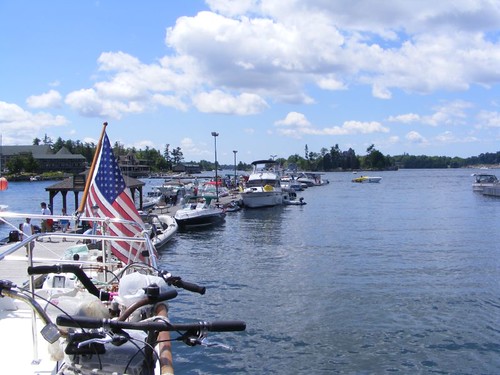
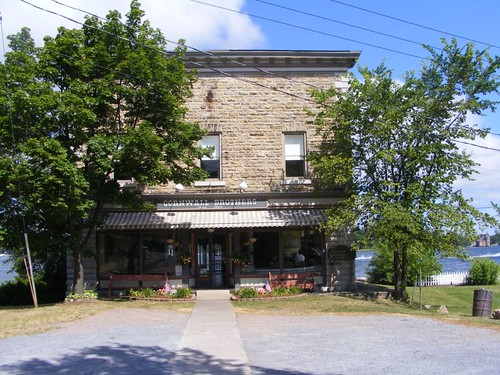
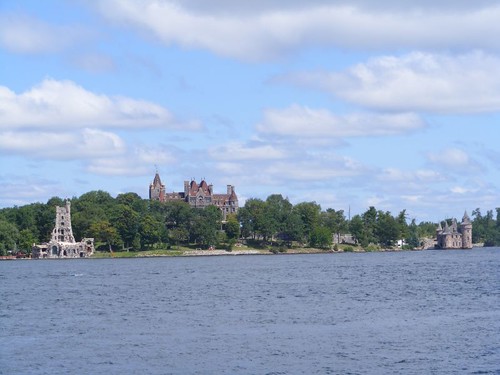
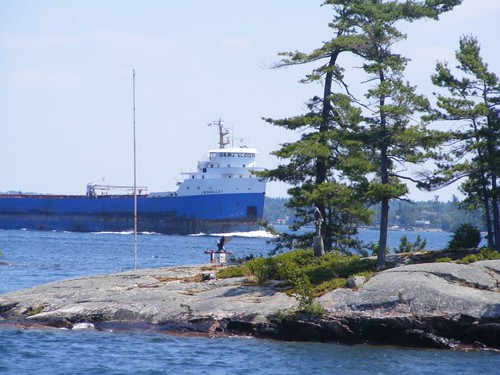
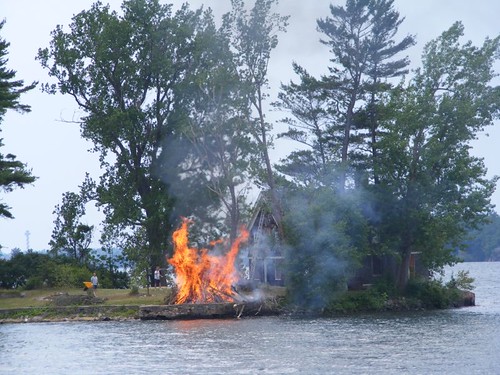
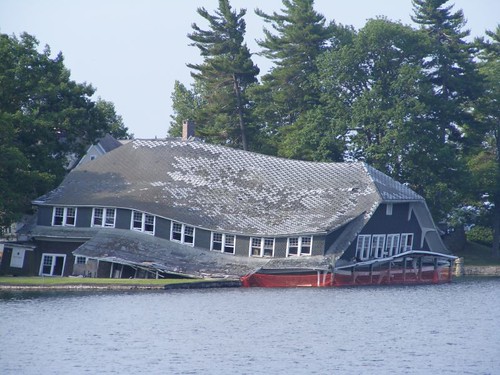

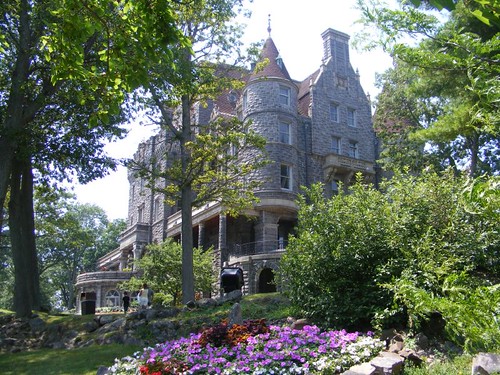
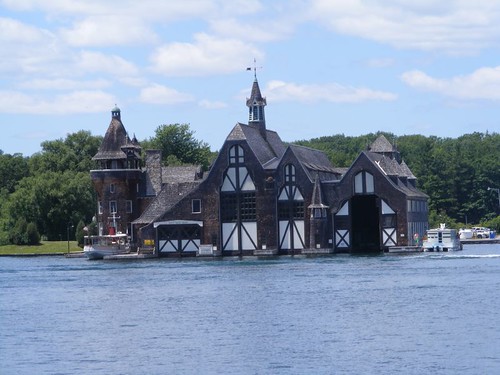
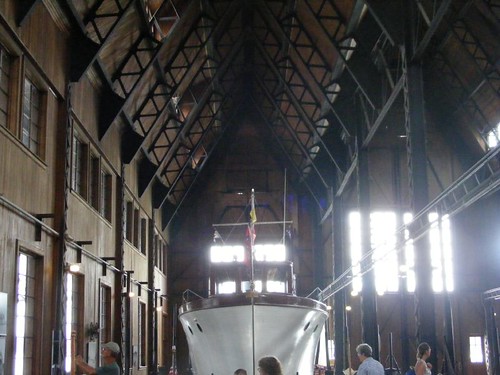
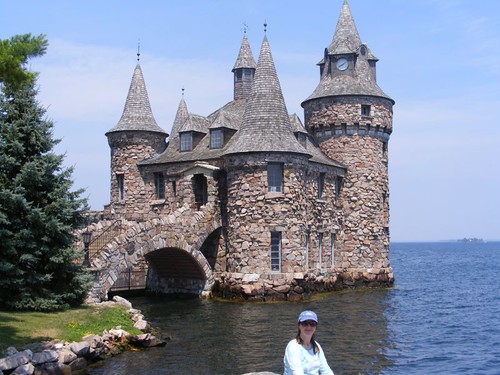

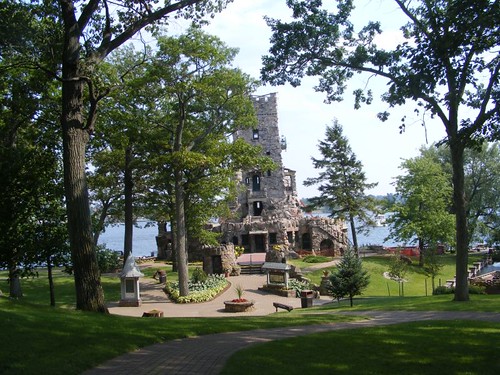
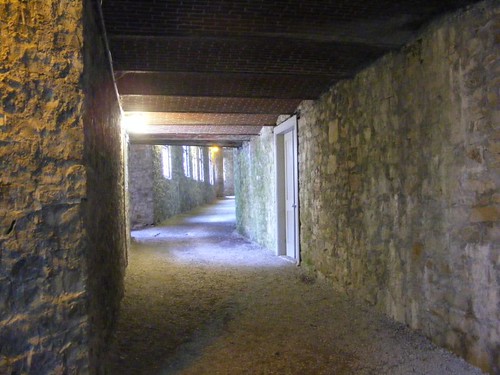
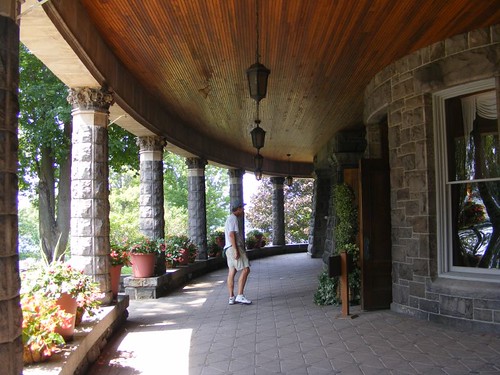
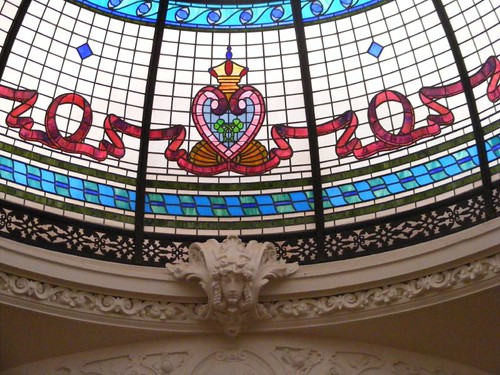
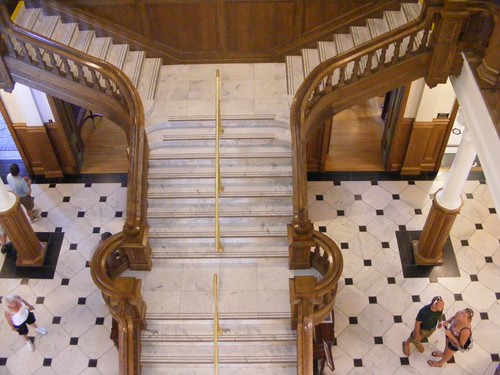
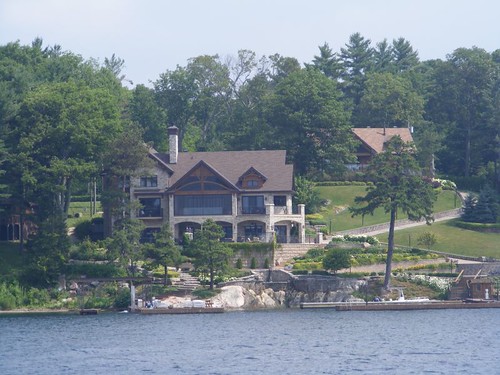

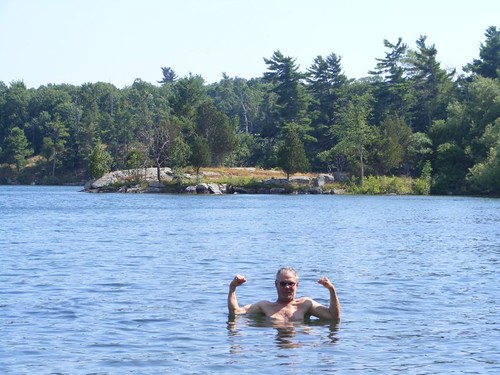










What an incredible post! I love it!
ReplyDeleteWHAT...AN... ADVENTURE !!!
ReplyDeletehandymanalex
Fantastic!
ReplyDeleteAwesome pictures!
Thanks!
Jerry
This just keeps getting better! Agree - pics are awesome; especially liked the sunset in previous post. But which one of you (besides Eddie in the water)got eye to eye w/the snake?! Nt'l. Geo. worthy - impressive!
ReplyDelete